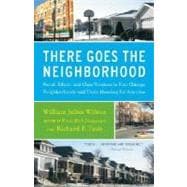
Note: Supplemental materials are not guaranteed with Rental or Used book purchases.
Purchase Benefits
What is included with this book?
| Acknowledgments | p. vii |
| Race and Neighborhood Social Organization | p. 3 |
| Beltway-A Predominantly White Community at the City's Edge | p. 14 |
| Dover-A Mixed Ethnic Community in Transition | p. 48 |
| Archer Park-A Taste of Mexico in Chicago | p. 97 |
| Groveland-A Stable African American Community | p. 128 |
| Neighborhood Racial Conflict and Social Policy Dilemmas | p. 161 |
| p. 191 | |
| p. 197 | |
| Notes | p. 203 |
| Index | p. 221 |
| Table of Contents provided by Ingram. All Rights Reserved. |
The New copy of this book will include any supplemental materials advertised. Please check the title of the book to determine if it should include any access cards, study guides, lab manuals, CDs, etc.
The Used, Rental and eBook copies of this book are not guaranteed to include any supplemental materials. Typically, only the book itself is included. This is true even if the title states it includes any access cards, study guides, lab manuals, CDs, etc.
Excerpted from There Goes the Neighborhood: Racial, Ethnic, and Class Tensions in Four Chicago Neighborhoods and Their Meaning for America by William Julius Wilson, Richard P. Taub
All rights reserved by the original copyright owners. Excerpts are provided for display purposes only and may not be reproduced, reprinted or distributed without the written permission of the publisher.